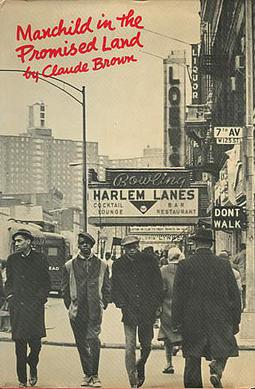Manchild in the Promised Land
Artist: Claude Brown
Year: 1965
Date of Action: ca. 1971-74
Region: North America
Location: Chicago, IL;
Subject: Political/Economic/Social Opinion, Violence
Medium: Literature
Confronting Bodies:
Description of Artwork: Manchild in the Promised Land is an autobiographical novel written by Claude Brown. It chronicles the author's coming-of-age story amidst poverty and violence in Harlem during the 1940s and 1950s that describes the cultural, economic and religious conditions that suffused Harlem while constructing a narrative of his early life. The book describes how early 20th century New York was thought to be the "promised land" for African Americans, but life in Harlem was more challenging than migrants expected. Brown’s parents, who had been sharecroppers, moved from South Carolina to Harlem in 1935 before they had children and lived in a tenement at 146th Street and Eighth Avenue. Published at the height of the civil rights movement, the book reached far beyond the traditional literary world, drawing new attention to the lives of those living in the inner city.
The Incident: In 1971, a complaint in the Chicago Daily Defender called the book "pornographic literature" ("Black History Book Rapped" Chicago Daily Defender (1960-1973); May 25, 1971; ProQuest Historical Newspapers: Chicago Defender (1910-1975), p. 5.) and cited "428 incidents of impure words." The book was banned in 1974 at a high school in Massachusetts because the headmaster found the language "filthy." (The English Journal, Vol. 63, No. 5 (May 1974), pp. 61-65.)
Results of Incident: The book has appeared on banned book lists for offensive language and violence but is celebrated by critics for its realism. It has sold more than 4 million copies and has been translated into 14 languages and is considered a classic of American literature.
Source:
Claude Brown: Telling The Harlem Story, NPR, February 24, 2011
Claude Brown, Manchild of the Promised Land, Dies at 64, NYTimes, February 6, 2002
